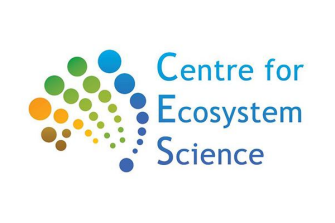Atmospheric

Greenhouse gases sources and sinks: collecting the data to quantify changing atmospheric chemistry impacts on our ecosystems.
The chemistry of the atmosphere affects all ecosystems. Our research focuses on advancing our understanding of the interactions between the atmosphere and the biosphere, with a primary focus on understanding the production and consumption of greenhouse gases in natural, rural and urban landscapes. Our overall goal is to provide better data to understand how the chemistry of the atmosphere is changing, to predict how this may affect our ecosystems via chemical exchanges between the atmosphere and the biosphere, and to improve the data used for greenhouse gas accounting and modelling Earth’s systems.
Natural landscapes
Throughout the natural landscape, there are both sources and sinks for greenhouse gases. The global carbon and nitrogen cycles are highly dynamic systems and our knowledge of the exchanges of carbon and nitrogen between the biosphere and the atmosphere are still maturing. Wetlands are one of Nature’s primary sources of methane emissions, but wetlands also store vast quantities of carbon. Depending on the prevailing moisture conditions, soils and karst landscapes (limestone caves) are at times a sink for methane. The timber in forests is a stable store of carbon, but much of this carbon is released when there are forest fires. Our research is focused on determining how variable climatic conditions change the rate of exchange of greenhouse gases between the biosphere and the atmosphere.
Agriculture
The agricultural sector is a major emitter of greenhouse gases. Two significant sources of greenhouse gases connected with agriculture include nitrous oxide emissions associated with the application of nitrogen fertilisers and methane emissions from livestock, primarily from cattle. Our research is focused on “top-down” measurements of these emissions to improve the data used for greenhouse gas accounting. This research is supported by the Cotton Research and Development Corporation.
Urban emissions
Our cities are a major source of anthropogenic greenhouse gases. We live in a bubble of methane and carbon dioxide at atmospheric concentrations that are much higher than historical natural conditions. Throughout Australia, there has been very little research undertaken to quantify the actual level of emissions generated from our cities and the extent to which this is altering the global atmospheric chemistry. In Sydney and Melbourne, we are monitoring how greenhouse gas emissions from these cities change throughout the day and over the year.
Coal mining and coal seam gas emissions
Every year atmospheric measurements throughout the world can identify that the use of fossil fuels is altering the chemistry of the atmosphere and this has long term ramifications for all ecosystems. Australia is one of the largest exporters of coal and liquified natural gas in the world. UNSW is undertaking contracted research with the United Nations Environmental Program that is contributing to the goals of the Climate and Clean Energy Coalition Oil and Gas Methane Partnership. This research is characterising the chemical properties of methane emissions from various sources throughout the Surat Basin in Queensland, Australia, with a primary focus on quantifying emissions from the coal seam gas sector. The aim is to provide scientific evidence to guide emission quantification and identify mitigation opportunities.
Since 2014 we have also been monitoring methane emissions from coal mines throughout NSW and Qld. Exhausting of methane is required for the safe operations of many coal mines, but this exhausted methane is a major contributor to regional emissions. Our research aims to better quantify the emissions that can be attributed to the coal sector and then assess how these emissions contribute to the changing the chemistry of the atmosphere on a global scale.
Outreach
The atmospheric chemistry and greenhouse gas measurement team are always keen to educate students and the community on sources and sinks of greenhouse gases and ways in which we can improve greenhouse gas monitoring and accounting. We always appreciate the opportunity to discuss ways we can reduce greenhouse gas production. Please contact Associate Professor Bryce Kelly if you would like to learn more.
- Publications on our atmospheric chemistry and greenhouse measurement research.
- PhD research students with a focus on collecting greenhouse gas emission data: Stephen Harris and Xinyi Lu (Lexie)

